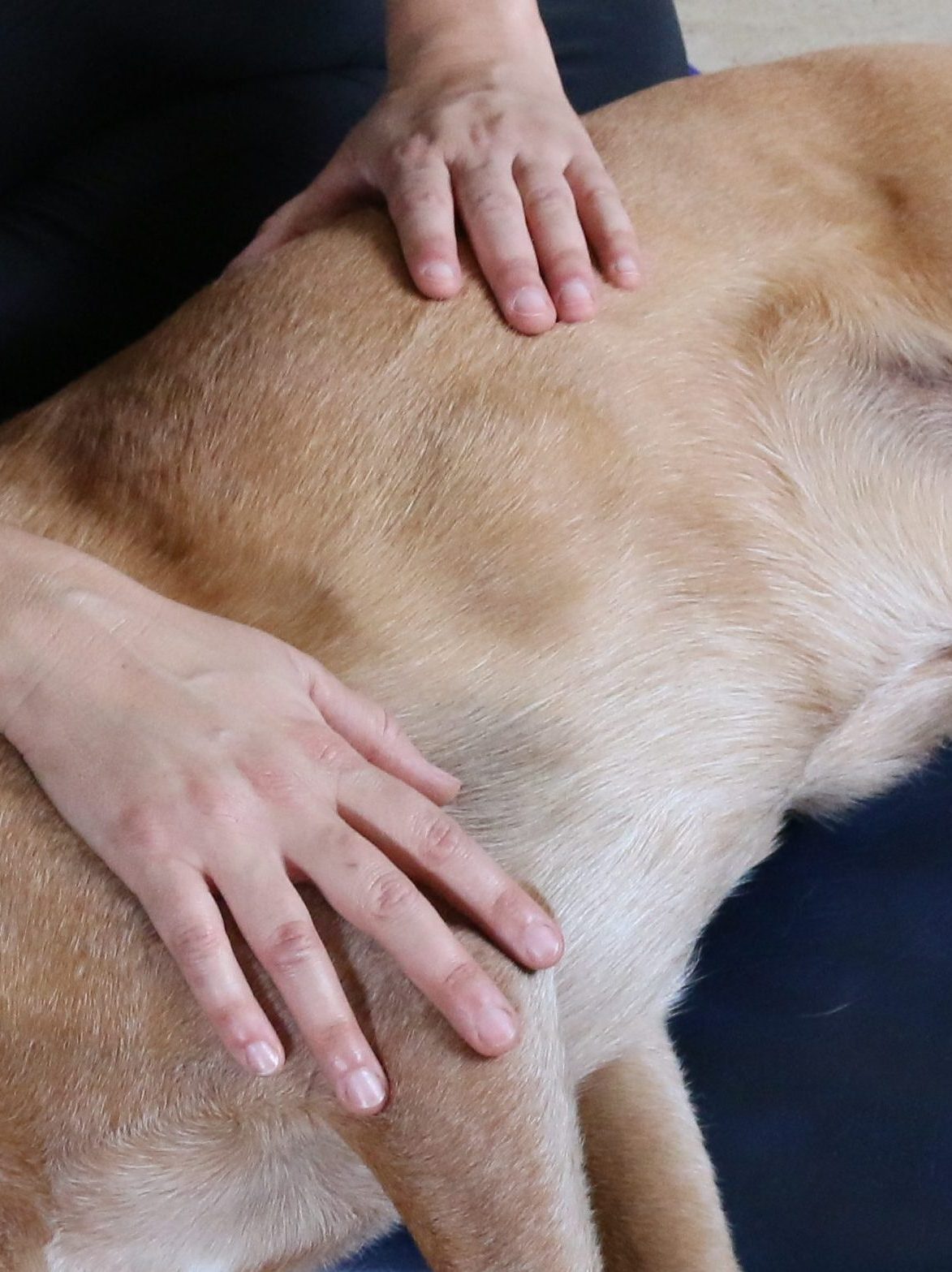Massage and soft tissue manipulation techniques are well proven to improve function, manage pain, increase relaxation, physical fitness and immune response, and often combines with the therapy offerings of many veterinary professionals.

Myofascial release provides an indirect and non-intrusive approach to manipulating soft tissue at surface level and stimulates the body into re-aligning itself and activating natural healing. As a technique, it makes a fantastic addition to massage and is especially beneficial to more sensitive or nervous animals. It is a very relaxing and effective therapy that facilitates the body’s healing mechanisms to release deep seated tension and trauma, and can reach areas that muscular massage isn’t able to.
Fascia is the tissue that lies underneath the skin and around all structures in the body to enable movement and function. In utero, the body develops from a single cell that folds over itself repeatedly to create more cells, and if you think of the body as a whole in this way you can see that rather than 600-ish muscles connecting together, we’re actually a single sack of tissue with around 600 different compartments of muscles.
The body’s largest sensory organ, fascia contains more nerve endings than muscles do. Fascia can become dehydrated, hardened and ultimately stuck from trauma, posture change and repetitive strain, restricting movement further and radiating discomfort throughout the whole body. By releasing areas of tightness and enabling improvement in nutrient supply of “tight” fascia, we can have a huge impact across the whole body. Using myofascial release techniques, it is possible for example to affect a restriction in your hip by “releasing” restrictions in your ankle.
This video by Dr Gil Hedley is a great explanation of what fascia is (please pay note to the advisories before watching). https://www.youtube.com/watch?v=VCfclmGrjMk&list=PLcJwJHY7WzG0qeX8CwdAOgBMPpGUr1Mpo
